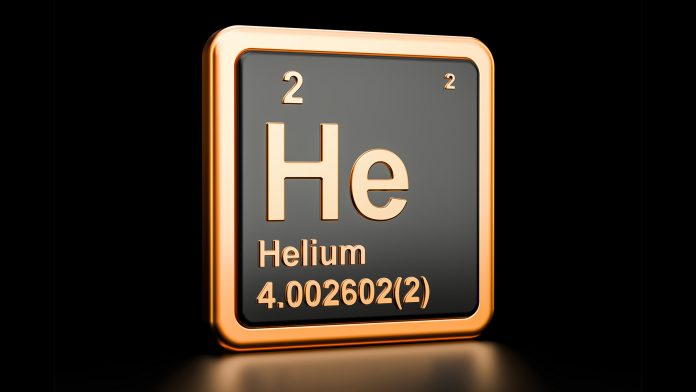Helium’s uses extend far beyond its role in balloons – the material is vital for medical imaging, manufacturing industries, and scientific research.
The significance of helium, the second-most abundant element in the Universe, can hardly be overemphasised. Characterised by its low boiling point, light weight, and non-reactive nature, this noble gas has a myriad of uses that extend far beyond the familiar realm of party balloons and airships. From acting as an indispensable component in medical imaging to playing a critical role in numerous industrial processes and scientific research, the many uses of helium underscore its pivotal place in modern society.
However, despite its abundance in the Universe, helium is relatively scarce on Earth. This rarity combined with its extensive usage raises concerns about potential shortages and emphasises the necessity for conservation strategies.
Furthermore, understanding helium’s environmental implications becomes increasingly important given our dependence on it.
This article explores how helium facilitates various facets of modern life and discusses relevant environmental impacts and conservation efforts related to this invaluable resource.
The fundamental properties of helium
Regarded as the second lightest element in the Universe, helium boasts a unique set of properties that make it indispensable in numerous fields, from medical technology to industrial operations.
Classified as a noble gas due to its low reactivity, helium’s stability is arguably one of its most defining characteristics. This stability can be attributed to the fullness of its outermost electron shell, which prevents it from forming chemical bonds with other elements.
In addition to this inherent inert quality, helium displays remarkable cooling properties and has an extremely low boiling point at -268.93°C.
The cooling properties coupled with the low boiling point make helium highly effective for cryogenic applications where maintaining very low temperatures is crucial. These characteristics are particularly beneficial in industries such as electronics and space exploration where precise temperature control is required.
Furthermore, helium’s inert qualities mean that it does not react with other substances under normal conditions, making it ideal for use in processes where a nonreactive environment is necessary or desirable.
From these perspectives, one can appreciate how valuable this seemingly simple noble gas actually is and how widely its applications range across diverse sectors.
The use of helium in medical imaging
In the realm of medical imaging, the essential role of this noble gas cannot be overstated, particularly in technologies such as Magnetic Resonance Imaging (MRI) where it functions as a cooling agent for superconducting magnets. The MRI safety depends largely on helium’s ability to maintain an extremely low temperature environment which is crucial for the proper operation of these devices.

Importantly, liquid helium reduces the electrical resistance of coils within MRI scanners and allows them to generate strong magnetic fields necessary for high-resolution imaging.
Notably, advancements in diagnosis have been made possible by incorporating helium into medical imaging technology developments. Inhaled helium has also shown potential in lung function tests showing its wide-ranging application in healthcare.
However, despite its vital importance, adequate management strategies are needed to handle this resource due to global supply constraints.
Helium uses in the manufacturing industry
Shifting our focus from the realm of healthcare to the production sector, it becomes evident that this noble gas has carved a niche for itself in diverse manufacturing operations. A key application of helium in the industry is observed in welding techniques, where its thermal conductivity and inert nature make it an optimal choice for use in processes like arc welding or laser beam welding.
Helium’s high heat transfer capacity aids in achieving deeper penetration into metals during welding, thus resulting in stronger welds.
Additionally, balloon manufacturers often resort to helium due to its lighter-than-air property which allows balloons to float. Its inertness also ensures that the balloons do not catch fire, thereby enhancing safety.
Furthermore, helium finds extensive use in leak detection systems owing to its small atomic size which enables it to permeate through even the smallest leaks with ease. This characteristic makes helium-based testing an effective strategy employed by industries ranging from automotive and aerospace engineering to nuclear power plants when stringent quality control measures are required.
In cooling systems enhancement, particularly those found within large-scale data centres or supercomputers, helium’s low boiling point and high specific heat capacity play crucial roles; these properties allow equipment to be cooled more efficiently compared with other gases.

Lastly, gas chromatography applications frequently utilise helium as a carrier gas due to its chemical inertness and ability to achieve rapid separation of complex mixtures without interacting with analysed substances thereby ensuring accurate results.
The importance of helium in scientific research
Beyond the domains of healthcare and manufacturing, this noble gas plays an integral role in advancing our understanding of the world through scientific research. Helium’s low boiling point and high thermal conductivity make it an ideal element for cooling instruments used in various branches of science, particularly in cryogenics research.
Superconducting magnets, which are fundamental to technologies such as Magnetic Resonance Imaging (MRI) machines and particle accelerators like the Large Hadron Collider, require extremely low operating temperatures to function efficiently. These temperatures are often achieved using helium-cooled systems.
The study of quantum mechanics also benefits greatly from the properties of helium. When cooled near absolute zero, it creates a unique state of matter called a Bose-Einstein condensate that enables scientists to observe quantum phenomena on a macroscopic scale.

Furthermore, due to its inert nature and minimal interactions with other elements or compounds, helium serves as an excellent tracer gas in numerous experiments across different fields.
Environmental impact and conservation efforts
Despite its seemingly ethereal nature, the extraction and uses of helium have tangible repercussions for our environment, necessitating concerted conservation efforts.
Notably, the emission impacts from helium production can contribute to greenhouse gases and environmental degradation.
Over time, these emissions can accumulate in significant quantities with potentially deleterious effects on ecosystems and climate change patterns.
Conservation policies have therefore become increasingly crucial in mitigating these environmental consequences while ensuring a sustainable future for helium uses.
Helium recycling
This process involves reusing purified helium to minimise wastage and reduce demand for new extractions. Several industries have adopted helium recycling systems where used helium is captured, purified, compressed, and then reutilised.
Advancements in recovery technologies are making it possible to recycle helium even from small-scale operations, thereby reducing release into the atmosphere.
Conservation policies and alternative solutions
Governments worldwide are implementing stricter regulations that encourage efficient use of this irreplaceable resource alongside promoting research into alternative solutions.
The development of sustainable sourcing strategies is a key factor towards achieving long-term availability of this valuable resource without exacerbating environmental complications.
These initiatives not only balance the need for continued access to helium but also underscore the importance of environmentally responsible practices when dealing with finite resources such as helium.
The many uses of helium require considerable conservation efforts
Helium uses extend far beyond its familiar role in festive balloons. The element’s fundamental properties make it indispensable in medical imaging, manufacturing industries, and scientific research.
The environmental impact of helium extraction and consumption necessitates immediate conservation efforts. This truth underscores the urgency to protect this precious resource.
It also stirs a profound sense of responsibility towards our planet and future generations that depend on such critical elements for their well-being and advancement.









